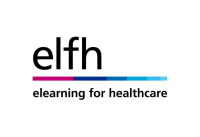Surgery | Common Surgical Conditions | Peripheral Vascular Disease: Leg Ulcers



Peripheral Vascular Disease Leg Ulcers
Session Overview
Description
This session provides an introduction to the key facts surrounding the development and management of lower limb ulceration. It presents an overview of the common aetiologies and symptoms and considers the interventional and conservative management available.
Learning Objectives
By the end of this session you will be able to:
- Identify the common causes and types of lower limb ulceration
- Describe the pathophysiology of venous ulcers
- Explain how to assess the lower limb ulcers
- Identify the role and value of vascular assessment
- Describe the conservative and interventional management/ treatments for lower limb ulceration
- Apply NICE guidelines for management of varicose veins
Prerequisites
Before commencing this session you should have:
- Completed the session Peripheral Vascular Disease Chronic Limb Ischaemia
- Completed the session Peripheral Vascular Disease Varicose Veins
- Reviewed lower limb vascular anatomy
Lower limb ulceration is more prevalent as people grow older. There are many underlying aetiologies which can predispose patients to develop ulcers and prevent effective, timely healing [1](read details regarding the reference). 1.5% of the adult population are now believed to be suffering with this condition and their ulcers can take many months or years to heal. Patients often experience cycles of recurrent ulceration and struggle to be concordant with the long-term conservative management. The experience of living with a lower limb ulcer has a significant impact on their quality of life. The most common aetiology encountered is venous disease; the signs of this chronic progressive disease are subtle and frequently go unnoticed.
This session will provide an overview of lower limb ulceration, and not only describes the symptoms and causes of ulceration but also a guide to assessment of the lower limb, diagnosis, development of management plans, including conservative and interventional routes and the prevention of recurrence.
- Acute Medicine | Infectious diseases | Differentia...
- Posted By eIntegrity Healthcare e-Learning
- Posted Date: 2024-11-20
- Location:Online
- This session considers the causes of fever and discusses differentials of fever in adults. It also considers causes of pyrexia of unknown origin.
- Acute Medicine | Infectious diseases | TSS Usual o...
- Posted By eIntegrity Healthcare e-Learning
- Posted Date: 2024-11-20
- Location:Online
- This session discusses toxic shock syndrome its diagnosis and treatment.
- Acute Medicine | Infectious diseases | Severe mala...
- Posted By eIntegrity Healthcare e-Learning
- Posted Date: 2024-11-20
- Location:Online
- This session summarises the diagnostic criteria for severe malaria.
- Acute Medicine | Infectious diseases | Investigati...
- Posted By eIntegrity Healthcare e-Learning
- Posted Date: 2024-11-20
- Location:Online
- This session covers the investigation and management of a patient presenting with dysuria.
- Acute Medicine | Infectious diseases | All about H...
- Posted By eIntegrity Healthcare e-Learning
- Posted Date: 2024-11-20
- Location:Online
- This session describes the pathogenesis, diagnosis and treatment of herpes simplex encephalitis.

